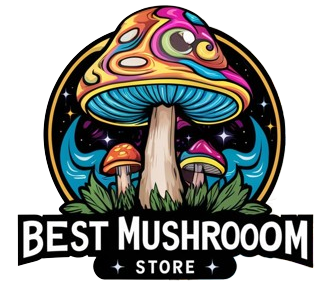Ergot is a psychoactive fungus that grows on certain types of rye grain. This fungus can cause hallucinations, delirium, and even death if consumed in large quantities. In small doses, however, ergot can be used as a medicine to treat migraines and other disorders.
What Is Ergot?
Ergot is a fungus that grows on rye and other grains. Ergot also produces a powerful chemical, called alkaloids. Ergot alkaloids have a wide range of biological activities, including effects on circulation and the nervous system. Some of these effects can be beneficial, but others are detrimental. Medical use of ergot fungus began in the Middle Ages to induce childbirth, but it was also commonly used as a hallucinogen and poison.
Ergot: Appearance and Characteristics
Ergot is a fungus that is produced by the Claviceps purpurea fungus. It is found as a dark mass growing on rye, wheat and other grains, particularly under damp conditions. Ergot contains a number of compounds, including ergot alkaloids and lysergic acid amide (LSA). It replaces some of the grain with thin strings that are black or brown in color. These strings are hard to separate from the grain when harvesting, so ergot-infested grain tends to make its way into flour and other products made from grain. The fungus is parasitic, and it gets its nutrients by penetrating the rye plant and feeding off of its tissue.The ergot fungus produces sclerotia, which are hardened structures that look like small seeds. They become part of the grass seed harvested for food for livestock.Sclerotia break down in the gut of an animal and produce a number of mycotoxin compounds. Ergovaline is one such compound and has been associated with endometritis (inflammation of the uterine lining), agalactia (inability to produce milk), decreased fertility and reproductive disorders such as abortion, stillbirths and retention of placenta.
The History of Ergot
The most famous outbreak of ergotism occurred in France in 944 AD, when more than 40,000 people died from eating bread made with infected rye grain. An epidemic of ergotism swept through Europe again between the 14th and 17th centuries, killing tens of thousands more people. The alkaloids produced by ergot have been used medicinally for hundreds of years. Ergotamine is used to treat migraines headaches & ergonovine has been used to treat postpartum hemorrhage (bleeding after childbirth). Ergot has a long and sometimes deadly history.
Salem Witchcraft Accusations and Ergot Poisoning
In the Middle Ages, people believed that evil witches cast spells and curses. But what if it was something else? The symptoms of bewitchment are similar to those seen in ergot poisoning. The ergot-tainted rye might have been the reason for accusations of bewitchment that prompted the Salem witch trials, according to a 1976 article in Science by Linnda R. Caporael.
In her essay, Caporael claims that the convulsive symptoms, such as crawling sensations in the skin, tingling in the fingers, vertigo, tinnitus aurium (ringing in the ears), headaches, sensory disturbances, hallucination, painful muscular contractions, vomiting and diarrhea were all described in Salem witch trials records.According to the Caporael hypothesis, there was a lot of rye in the area and suitable climatic conditions for ergotism to develop. In 1982, historian Mary Matossian revisited the Caporael hypothesis in an article published in American Scientist, suggesting that symptoms of “bewitchment” are similar to those seen in ergot poisoning.
Ergotism And Fungus Poisoning
Ergotism is a disease caused by a fungus that infects rye. The fungus produces ergots, which are toxic substances that can cause problems in the body. This can include convulsions and pain in the limbs and joints, headaches and vertigo. There are different types of ergotism, depending on where the infection occurs in the body and how it affects the body.The symptoms usually appear within 24 hours of ingesting the ergot’s toxins. They tend to begin with muscle spasms in the face, neck, arms or legs that cause drooping eyelids or slurring of speech, followed by sweating, nausea and vomiting. Later symptoms include dizziness and loss of balance, severe pain in various parts of the body and convulsions. Sometimes ergotism can lead to gangrene because of the limited blood circulation.
Ergot As a Medicine
Ergot is an alkaloid substance produced by a fungus that develops on rye and other grain plants. The fungus produces ergotamine, which has powerful effects on the body. Ergotamine can be used as a medicine to treat cluster headaches, but it also has many unpleasant side effects.
Ergot extracts are used to make several important drugs, including:
- Ergotamine, which is used to treat cluster headaches. It can be taken by mouth or injected.
- Dihydroergotamine, which is used to treat migraines. It can be taken by mouth, injected, or inhaled as a spray.
Ergot also has a long history of use as a abortifacient, and it is still sometimes used to terminate pregnancies. However, ergoline can be toxic in large doses, and it can cause hallucinations, convulsions, and other serious side effects. For this reason, ergot should only be used under the supervision of a qualified healthcare provider.
Ergot And LSD
For centuries, ergot has been used as a medicine for various purposes, including to induce labor and stop bleeding. The fungus produces ergotamine alkaloids, which have effects similar to amphetamines and are also hallucinogeni. Hence its use as an ingredient for LSD production.
LSD is a powerful psychedelic drug that is chemically similar to alkaloids found in ergot. While LSD is much more potent than any naturally occurring alkaloid, it shares many of the same effects, including hallucinations and profound changes in perception. The compounds act on serotonin and dopamine receptors in the brain to cause hallucinations and other trippy effects.
Ergot alkaloids have been used as treatments for migraines, cluster headaches, and other conditions characterized by severe pain. Ergot also has a long history of use in psychoanalysis and psychiatry, similarly to LSD, as it was thought to be helpful in treating conditions like schizophrenia and psychosis. However, the use of ergot-derived drugs in psychiatry has largely been abandoned due to the advent of safer and more effective medications.
Effects of Ergot
Ergot is sometimes used as an ingredient in psychedelic drugs such as LSD and DOB. This is because both LSD and DOB have similar chemical structure to lysergic acid and ergine which are found in ergot. Ergot can be used to treat postpartum bleeding (PPH). When ergot is taken orally at low doses after childbirth or miscarriage, it stimulates uterine contractions that help expel retained blood clots/tissue/placenta which may be causing PPH.
Legality of Ergot
Ergotamine which is a naturally occurring lysergic acid amide is a controlled substance in the United States. This means that it is legal, but there are restrictions on its use. It is a Schedule III drug, which means that it has a medical use but also has the potential for abuse. Ergotamine can be used to treat migraines, but it should only be used for this purpose and only under the care of a doctor.
Ergot is considered to be poisonous, and it can be fatal if it is consumed in large quantities. Because of this, it is important to make sure that you only take the recommended dosage and that you do not exceed it. Ergotamine is a precursor for the LSD production and is used now only as a prescription drug. Over the years, the use of ergotamine has changed, but it still has a place in today’s medical world.
Similar Posts:
- Claviceps Purpurea, Also Known as an Ergot Fungi. Info About This Fascinating Species
- How to Microdose Mushrooms for Migraines: Relief From Psilocybin
- Amanita Pantherina, Known as Panther Cap – Features, Origin, Toxicity, and More
- Is LSD Good for You? Benefits of Microdosing and Other Uses of LSD
- Are Shrooms Addictive? Psilocybin Mushrooms & Magic Mushrooms Addiction
- Panaeolus Cyanescens AKA Copelandia Cyanescens: Magic Mushroom
- Headache After Shrooms: Trip Recovery After Psychedelic Magic Mushrooms






